
A Tiger Safari in India
Spotting this elusive, endangered species is a rare bonus.
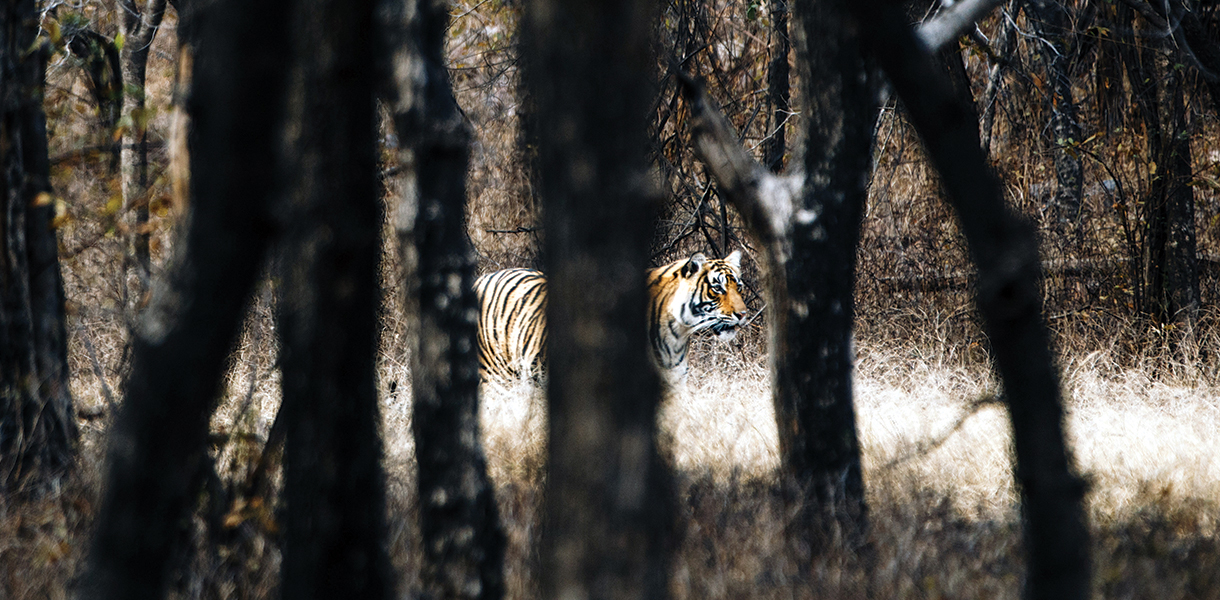
Both a naturalist and wildlife guide, Tyabji has become a local authority on the one animal tourists come to India to see. His charges are on the verge of leaving without glimpsing one, and all he can effectively say is “oh, well.”
“It’s a privilege to be in tiger country,” he says. “If you see a tiger, don’t buy a lottery ticket, because you’ve used up all your luck.” At this rate, Powerball might have better odds.
It’s no secret that serendipity plays an outsize role on safari in Panna National Park in the central Indian state of Madhya Pradesh (called “Tiger State” for its six tiger reserves). The rhythms of the wild are resolutely dictated by luck: On a game drive, the group might stumble onto a jungle conclave of elephants, lions, and buffalo by a waterhole, and by that afternoon be convinced that all predators have been driven out of the bush by the relentless cacophony of birds. The first thing any aspiring safarigoer in India dreams about is trailing a streak of tigers through the jungle, and the idea of leaving the Indian wilderness without glimpsing one seems unfathomable—and yet, too often, distressingly probable.
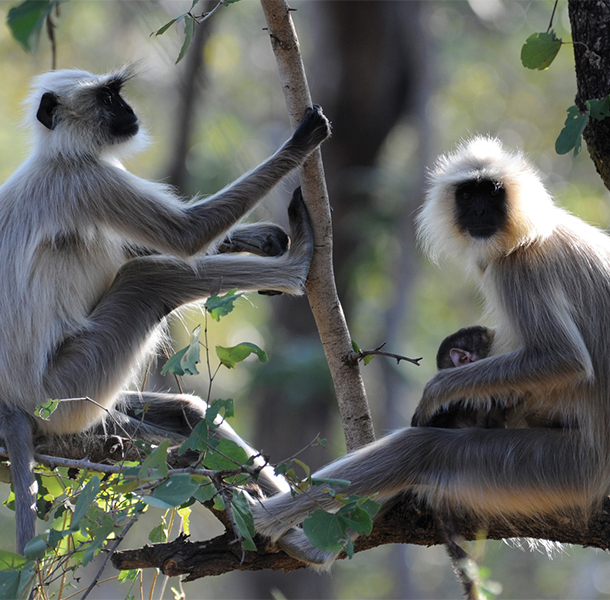

Instead of a VIP flyover, arriving in Kuno-Palpur is an invitation to India’s heartland and the first stop on an 11-day mobile camping expedition with Tyabji’s Kaafila Camps and andBeyond safaris. Population and cell signal both thin and then dissipate during the approach to camp, a collection of four plush tents overlooking a stretch of the Kuno River where the water is so placid that it mirrors the surrounding cliffs like glass.
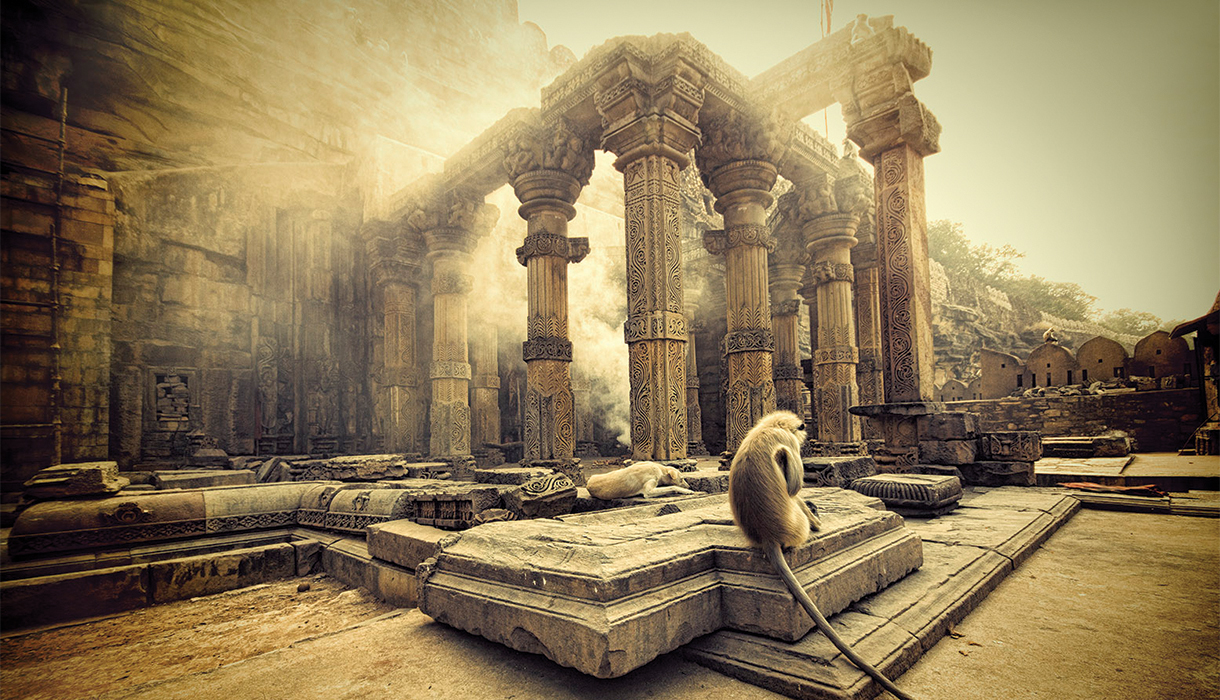
While it may not be tiger habitat, Kuno is perhaps the closest thing to a private game reserve in India. In Africa, many luxury lodges preside over concessions that only their guests can access; in India, wilderness is public domain, and prime sightings are often bottlenecked with dozens of vehicles. But at this 350-square-mile sanctuary, competition to see spotted deer with antlers as big as humans, jackals circling a carcass, and hyena staring back with intense curiosity is next to none.
Rudyard Kipling set The Jungle Book in Madhya Pradesh, and Kuno could be a prototype for the wilderness there—engulfed in a thick silence interrupted sporadically by the chirping of a swallow or the rushing of a river. In a place like India, with 1.3 billion people and some of the world’s most polluted cities, silence and clean air are real luxuries—alongside Kaafila’s cliffside sundowners and five-course dinners.
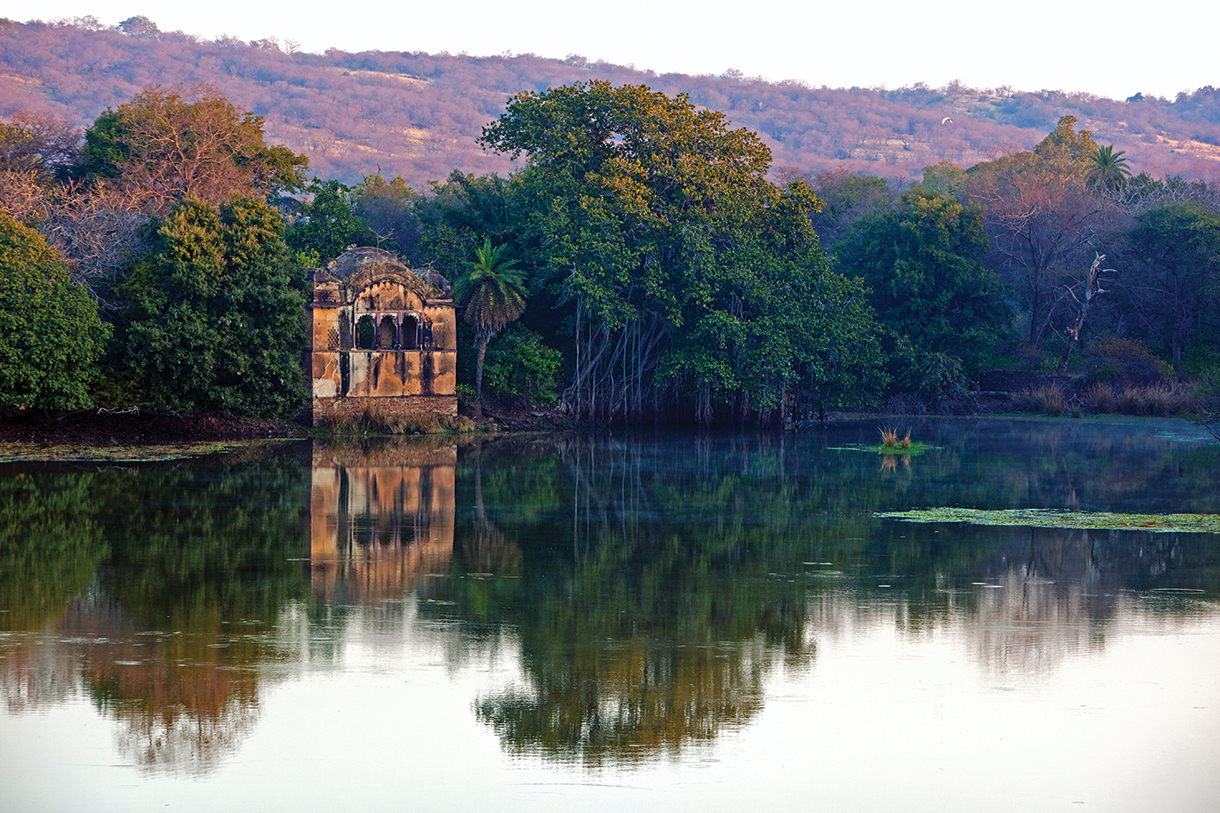
Each day Tyabji’s team magically transplants camp to yet another idyllic setting. Long drives between destinations are punctuated with stops at the immaculately preserved cenotaphs of Shivpuri and the sandstone temples of Khajuraho, famed for their erotic carvings. Anywhere else in the world, these monuments would be choked with tourists; here, pictures are unmarred by anyone apart from the occasional photobombing sweeper. At Kalinjar, Tyabji walks along the parapets to courtyards where monkeys outnumber tourists and 1,000-year-old wall carvings of Shiva cling to the edge of a cliff. “You’re in the middle of nowhere and then there’s this,” Tyabji says. “The vitality of this piece is amazing—it’s the single most remarkable work of central Indian art.”
The Bengal tiger is an Indian icon, a recurring character in centuries of literature and art. But rampant hunting and poor wildlife management led to alarm bells in 1968, when numbers slumped from the hundreds of thousands to 2,500. Recovery began in earnest, but a surge in poaching and a lack of widespread conservation precipitated another steep decline in the mid-2000s, when several reserves, including Panna, lost their entire populations. But the tide is finally turning, as Panna is now home to more than 40 and national figures are expected to cross 3,000 when the 2018 National Tiger Conservation Authority census is released.
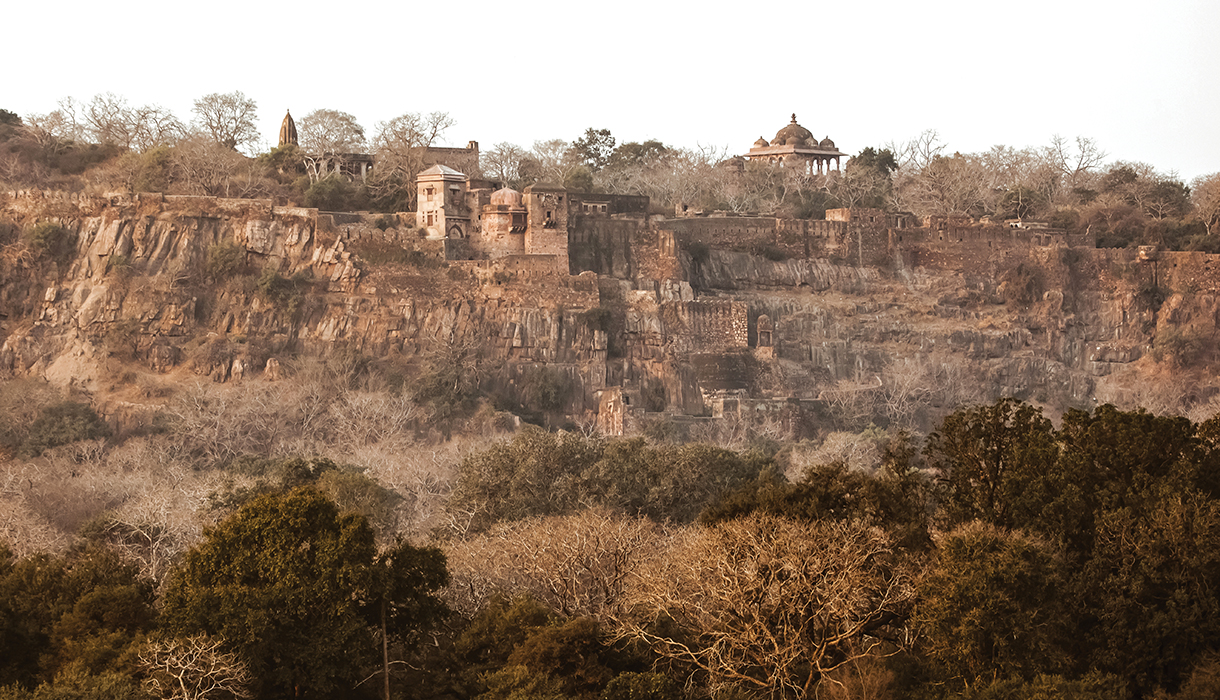
“The good thing about this place is you can be completely non-focused on tigers,” says Raghu Chundawat, a conservation biologist and author of The Rise and Fall of Emerald Tigers: Ten Years of Research in Panna National Park. He owns the eight-suite Sarai at Toria there with his wife, Joanna Van Gruisen. “The landscape is very diverse—every turn is a new scene,” he says. Dense groves of bamboo transition to an ethereal teak forest cloaked in mist with sambhar deer skittering through to fragrant fields of wild mint, hot on the trail of a jungle cat and Indian wild dog. Both are extremely hard to see, says local guide Ajay. “I haven’t seen a wild dog at Madhya Pradesh in two months.”Moments after crossing Panna’s gates, a leopard is seen crouching in the grass. A good omen, perhaps? A leopard is, after all, rarer to spot here than a tiger. “The good thing about this place is you can be completely non-focused on tigers,” says Raghu Chundawat, a conservation biologist and author of The Rise and Fall of Emerald Tigers: Ten Years of Research in Panna National Park. He owns the eight-suite Sarai at Toria there with his wife, Joanna Van Gruisen. “The landscape is very diverse—every turn is a new scene,” he says. Dense groves of bamboo transition to an ethereal teak forest cloaked in mist with sambhar deer skittering through to fragrant fields of wild mint, hot on the trail of a jungle cat and Indian wild dog. Both are extremely hard to see, says local guide Ajay. “I haven’t seen a wild dog at Madhya Pradesh in two months.”
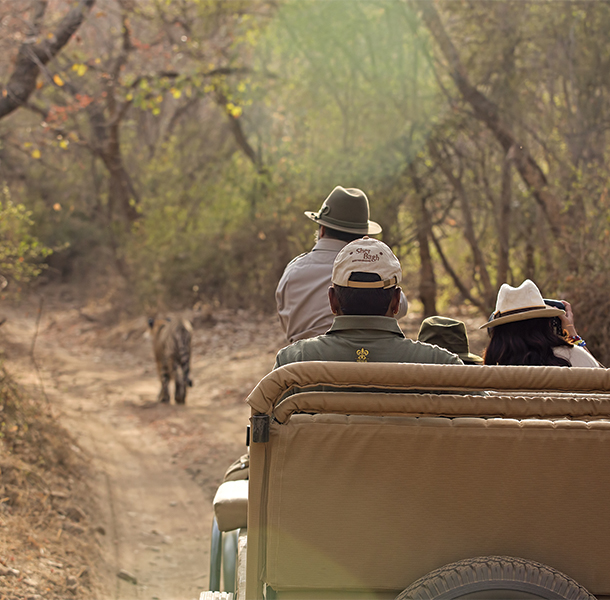
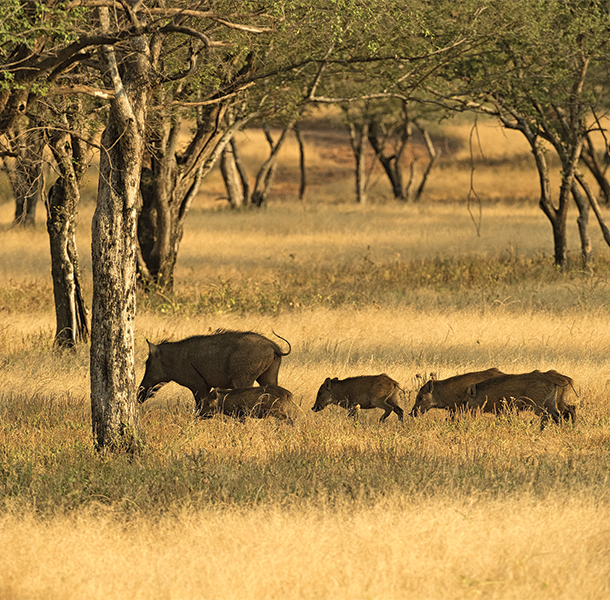
A game drive into Ranthambore lays out how wildlife and human civilization exist in tandem. Throughout the 150-square-mile expanse, vestiges of the 1,000-year-old Ranthambore Fort still stand. A Mughal-era dargah (shrine) still in use lies deep within the buffer zone, as do crumbling pavilions, faded stepwells rising from lakes and forests, and ancient walls woven with emerald leaves. A sepia-tinted archway abutting a thick curtain of banyan vines marks the entrance into tiger territory.
At last, “Tiger! Tiger! Tiger!” guide Ashlesh whispers urgently, spotting one of the park’s 60-plus specimens. The tigress Arrowhead strolls lazily to the left of a jeep—unencumbered by anyone or anything, as only a queen of the jungle could be—graciously loping around to the front to grant her audience a better view. Then just as suddenly as she came into view, she’s gone.
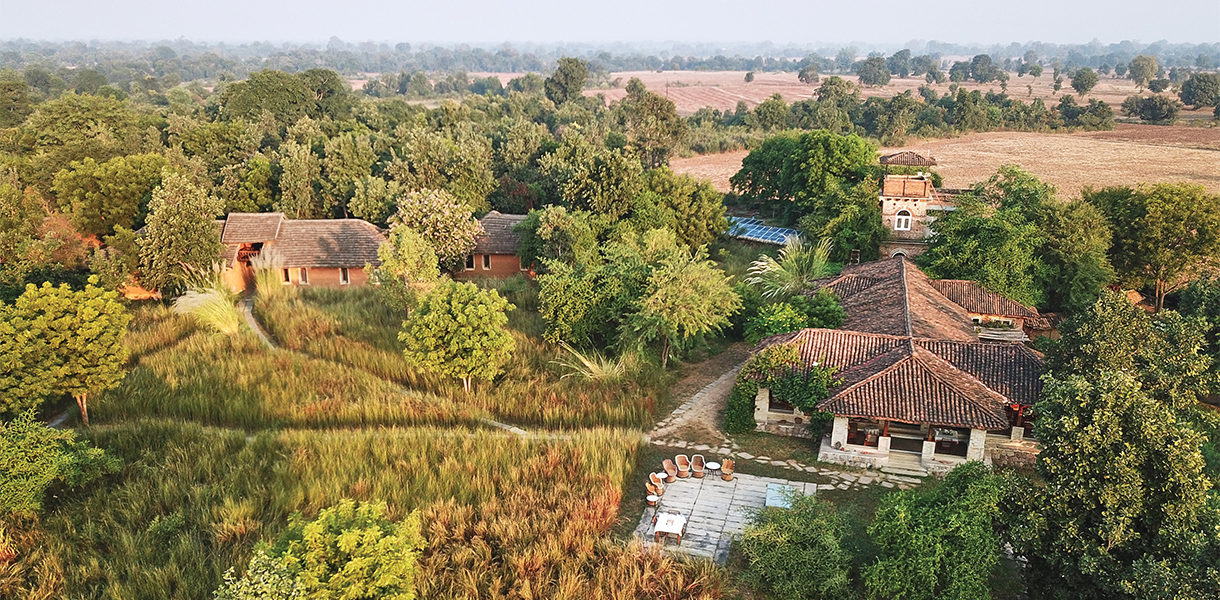
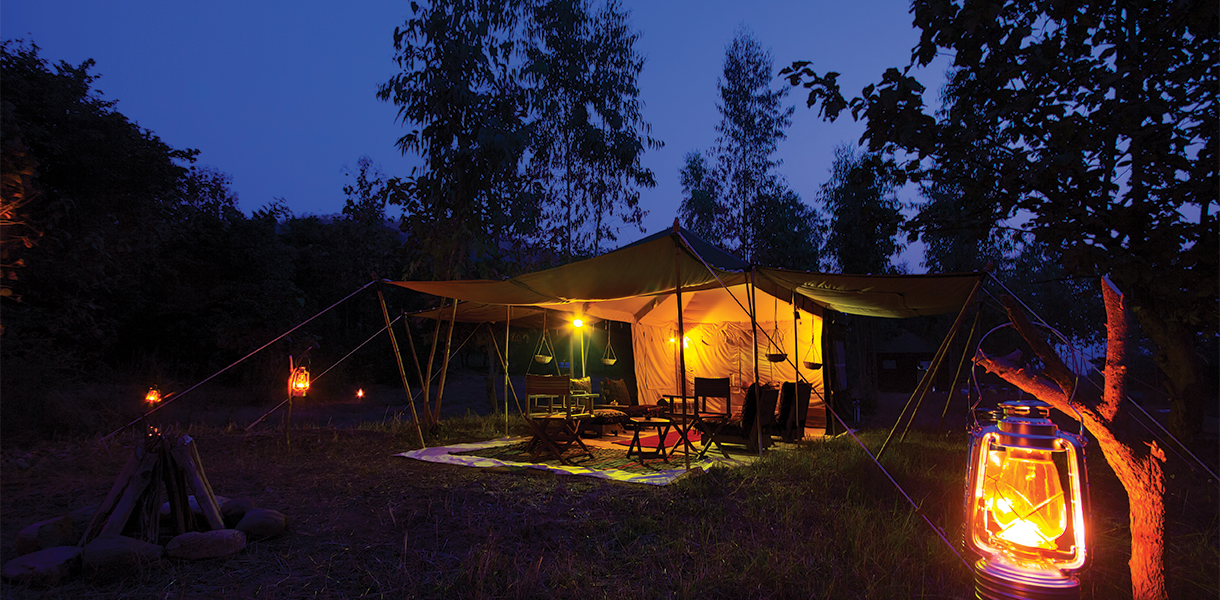
ON SAFARI
andBeyond safaris (andbeyond.com) offers 11-day mobile camping tours of Madhya Pradesh with Hashim Tyabji and Kaafila Camps (kaafilacamps.com). Start in Khajuraho, home to a collection of UNESCO World Heritage Site temples. Move to the first campsite at Kalinjar and stay in a comfortable tent appointed with colorful local textiles. Then head to the family-owned Sarai at Toria (saraiattoria.com) lodge at the tiger reserve of Panna National Park for two nights while the campsite relocates near the ancient Kalinjar Fort in Uttar Pradesh at Kuno-Palpur Wildlife Sanctuary in the northern part of the state. For those who want additional tiger-tracking opportunities, andBeyond offers an add-on at one of India’s best wildlife retreats, Suján Sher Bagh (sujanluxury.com) in Rajasthan’s Ranthambore National Park. For other lodging options throughout Madhya Pradesh, check out Taj Safaris (tajhotels.com), as well as the Rare India (rareindia.com) wildlife portfolio, which consist of more intimate and boutique offerings. Other luxury resorts near Ranthambore include Aman-i-Khas (aman.com) and the Oberoi Vanyavilas (oberoihotels.com).






